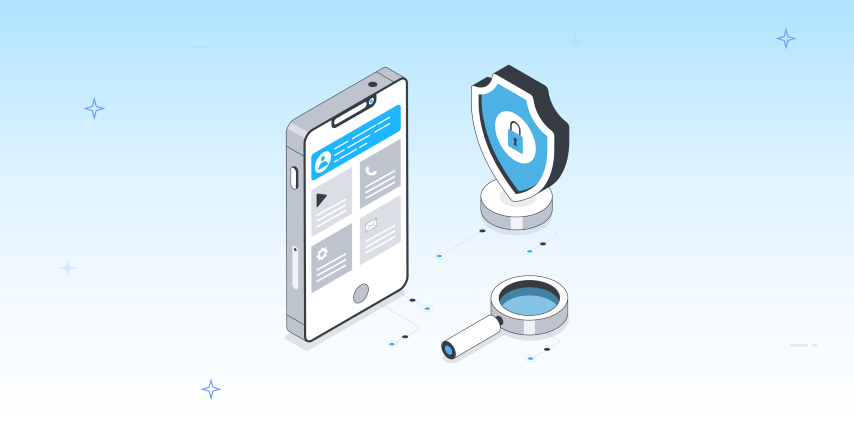86 / 100
We find ourselves in a digital world where innovation is thriving. Hago is a shining star among the galaxy of apps that has won the hearts of social butterflies and gamers alike.
Have you ever wondered what the magic was behind its creation? Hago is an enchanting app because of its symphony of code, design, and functionality. We invite you to join us as we explore how much it cost to build an app like Hago.
In a world where technology and entertainment are intertwined, the cost of build an app like Hago is an exciting puzzle. The financial journey begins with the conception of an idea and ends when the app is launched.
Prepare yourself for a dive into budget breakdowns, the dynamics of development, and the magic of transforming lines of code into a digital wonderland. This exploration is for anyone interested in the financial aspects of app creation.
What is the Hago App?
Hago App is a social gaming platform on mobile devices that allows users to play various casual games and connect with players worldwide. Hago’s user-friendly interface offers various multiplayer games in various genres, such as arcades, puzzles, and sports. Users can create profiles and chat with other users to foster social interaction.
The app’s interactive features allow for real-time voice and text communication, which enhances the social experience. Hago is popular with mobile gamers who want a mix of casual gaming, social networking, and bite-sized entertainment.
How Much Does It Cost To Build An App Like Hago?
The cost to build an app like Hago, the popular social gaming platform widely used, depends on several factors. The build of an app like Hago can vary greatly depending on the number of features, resources available for development, technology stack, and design requirements. To provide a complete overview, we will summarise the main factors affecting the cost.
1. Features Set:
Hago has many features, including multiplayer games and social networking. It also offers chat, video sharing, and other services. The cost to build an app like Hago is affected by the complexity of your app and how many features you include.
2. Platform(s):
If you want to build an app like Hago, knowing it is compatible with iOS and Android is crucial. The cost and time of developing two platforms is higher than for one.
3. Design and User Experience
A gaming application must have a visually appealing and user-friendly design. The cost to build an app like Hago can be influenced by custom graphics, animations, and UI/UX design.
4. Backend Development:
Backend developers must build the server infrastructure that supports real-time multiplayer games, user data management, and social interactions.
5. Multiplayer functionality:
Real-time multiplayer implementation can be complicated due to the server architecture and data handling. It can increase the cost to build an app like Hago time.
6. Chat and Communication
You’ll have to invest more in communication modules if you want features like voice chat, video sharing and in-app messages.
7. Monetization Strategy
Hago earns revenue from in-app purchases and advertisements. The monetization plan will affect the cost to build an app like Hago and its scope.
8. Technology Stack:
The cost to build an app like Hago and time can be affected by the programming language, frameworks and third-party library choice.
9. Testing and Quality Assurance
To deliver a polished application, rigorous testing, bug-fixing, and quality assurance are essential. Allocate resources to testing. It is vital to know that this will affect the cost to build an app like Hago.
10. Maintenance and updates:
After launch, maintenance, updates, and support will be required to ensure that the app continues to function smoothly and can adapt to the changing mobile ecosystem.
However, to provide you with a breakdown in this section, we have compiled a table of cost components used in the process to build an app like Hago;
| Cost Component | Estimated Cost Range |
| Design and UI/UX | $1,000 – $3,000 |
| Frontend Development | $2,000 – $5,000 |
| Backend Development | $3,000 – $5,000 |
| Multiplayer Functionality | $2,000 – $4,000 |
| Chat and Communication | $1,000 – $3,000 |
| Monetization Features | $1,000 – $3,000 |
| Testing and QA | $1,000 – $3,000 |
| Deployment and Launch | $1,000 – $2,000 |
| Post-Launch Maintenance | Ongoing cost ($1,000/month) |
| Total Estimated Cost | $12,000 – $25,000+ |
These cost to build an app like Hago estimates are only rough estimates. It may vary significantly depending on factors such as the requirements of each project, the development rate in different regions, and other factors. The cost to build an app like Hago and its ongoing maintenance will also vary depending on your user base and how often you update.
A complex app such as Hago requires a significant investment because of its features, social interaction, and multiplayer capabilities. You should consult an on-demand app development company for a more accurate estimate. They can give you a tailored quote based on the details of your project.
Features That Affect the Cost Of Build An App Like Hago
Hago is a social gaming platform that offers a wide range of interactive features. These features have a significant impact on the cost of the app. Hago is an interactive social gaming platform with a variety of features.
These include multiplayer games, chat rooms in virtual worlds, social networking, and more. Each feature adds complexity to the development process and impacts time and resources. This article will explore the main features of an application like Hago and how these affect the Hago app development solutions cost.
1. Multiplayer Gaming:
Hago’s multiplayer gaming feature is one of its core features. Multiplayer games require complex coding to maintain smooth, real-time interaction between players. Costs increase with complexity, which includes factors such as graphics quality, gameplay mechanics, and synchronization.
It is essential to conduct thorough testing to detect and fix any bugs that could affect the gaming experience. The higher the costs of Hago app development due to the effort and expertise required, the more engaging and diverse the multiplayer games are.
2. Virtual Chat Rooms:
Hago offers users virtual chat rooms to interact with friends and other users. Chat functionality is implemented by developing the user interface and the backend systems that handle message transmission, updates in real-time, and moderation. To ensure a seamless, secure chat experience, additional resources are required. It impacts both the time and cost build an app like Hago.
3. Social Networking Features
Hago’s social networking feature allows users to interact with other users and connect with their friends. Developing features like user profiles, friends lists, activity streams, and status updates requires careful planning and programming. These features increase user engagement but add to the cost to build an app like Hago because of their complexity.
4. Voice and Video Calling:
You must integrate real-time communication protocol and codecs to enable voice and video calls within a chat app development. This feature requires audio and visual processing expertise and a backend infrastructure to handle the data transmission. The development costs increase when ensuring high-quality, lag-free calls.
5. Monetization Strategies:
Hago uses a variety of monetization methods, including in-app purchases and advertisements. It also has a virtual currency system. These strategies require additional development effort to ensure seamless integration and user experience. The decisions about how and where to implement these monetization methods impact the cost of build an app like Hago and potential revenue generation.
6. Customization and Avatars:
Hago lets users customize their avatars. To create a customizable system with many features, you need to develop a variety of visual items, clothing, accessories, and more.
Not only does this require design work, but also a backend system to manage customization options and ensure consistency across devices. The higher the cost to build an app like Hago, the more customization options there are.
7. Leaderboards, Achievements and Awards:
Hago’s gaming experience is not complete without leaderboards and achievements. These features require tracking player progress, computing scores, and displaying ranking. The complexity and cost to build an app like Hago are increased by developing an accurate and comprehensive system for leaderboards.
8. Cross-Platform Compatibility:
Hago is available for iOS and Android devices. In order to ensure that the app works seamlessly across different platforms and devices, additional development resources are required. The cost to build an app like Hago increases when you customize the user experience, optimize performance, and address platform-specific issues.
9. Security and Privacy Measures:
Apps that involve user interaction and transactions, in particular, require high security. Additional expertise and coding are required to implement security measures that protect user data, prevent unauthorized access, and secure transactions. Security audits and updates must be performed regularly, adding to the development costs.
10. User Engagement Features:
Hago uses features such as virtual gifts, rewards, and daily challenges to keep users interested. To design and implement these features, careful planning is required. The more dynamic, engaging, and complex these features are, the greater the development effort and costs they require.
11. Backend Infrastructure:
Hago’s interactive features require a robust backend. Included in this are server setup, databases, and APIs, as well as data synchronization mechanisms. To ensure scalability and reliability in the backend and low latency, investment is required in both game app development and maintenance.
7 Steps To Build An App Like Hago
Creating an app like Hago, a social gaming platform, involves several essential steps. Hago is a social gaming platform that allows users to play games and connect in a virtual world. Follow these steps to develop party, chat, and games app development.
Step 1: Conceptualization and Idea
Start by clearly defining the purpose of your app, its target audience, and core features. You can research the market and discover what users want to see in an app. Decide what games you will include, your social features, and unique selling points. If you want to build an app like Hago, it will be guided by a well-defined idea. It will also help you stay focused on your app’s goals.
Step 2: Market Research and Analysis
Market research is essential to assessing the competition, identifying trends, and understanding user expectations. Analyze social and gaming apps such as Hago and learn from their strengths. This research can help you refine the concept of your app, select the best monetization strategy, and create design features that will make it stand out.
Step 3: Designing and User Experience
Create a design that is user-centric and prioritizes engagement and ease of use. Create wireframes and prototypes to visualize your app’s flow and layout. Create an intuitive interface to enhance the gaming experience while encouraging social interaction. Focus on responsive design for a seamless experience across devices and screen sizes.
Step 4: Development
Consider factors like platform compatibility, security, scalability, and scalability when choosing the right technology stack for your application. Create both front-end as well as backend components that include features such as user profiles, friends lists, real-time messages, and multiplayer gaming. Assure efficient data management and smooth game mechanics. Also, ensure robust security measures that protect user data and transactions.
Mobile App Development Cost in 2023
Step 5: Game Integration
Integrate a variety of games in your app. These can range from casual, multiplayer, and competitive options to collaborative and collaborative. Use game development frameworks or hire mobile app developers to create engaging gaming experiences. Use features such as leaderboards, virtual currency, and in-game rewards to encourage user retention.
Step 6: Interactive and Social Features
Implement social features to allow players to chat, connect, and interact with each other while playing. Video calls, group play, and real-time chat are all included. Create a system to add friends, join communities, and share achievements. These features will enhance the overall experience by creating a sense of community.
Step 7: Launching, Testing, and Marketing
Test your app on different devices to find and fix any bugs, glitches, and performance problems. Prepare for the launch of the app once you are satisfied with its quality. Create a marketing plan with a compelling app description, promotional materials, and a social media presence. Use influencer partnerships or app store optimization to boost visibility.
Takeaway!
If you want to build an app like Hago, then now must understand how complex the process is. App complexity, features and design complexity, and the number of development hours and location of your development team are all critical considerations.
The costs to build an app like Hago can vary significantly from $8,000 to $25,000. For an accurate estimate of costs, it is essential to hire dedicated developers and plan thoroughly. The final investment depends on the size and vision of the app, so it is vital to balance the costs and functionality.
Frequently Asked Questions
Q1. How Much Does It Cost To BuildAn App Like Hago?
The cost varies based on features, complexity, and development team rates. A simple version might start around $8,000, while more advanced versions could range from $10,000 to $25,000.
Q2. What Factors Influence The App Development Cost?
Factors include app complexity, design, features, platforms (iOS, Android), location of the development team, and additional services like backend development and testing.
Q3. Are There Ongoing Expenses After The App Is Built?
Ongoing expenses include maintenance, updates, server costs, bug fixes, and potential marketing efforts to attract and retain users.
Q4. How Can I Lower The Development Cost?
You can lower costs by starting with a Minimum Viable Product (MVP), using open-source solutions, outsourcing to countries with lower development rates, and focusing on essential features.
Q5. Can The Development Cost Be Accurately Predicted Upfront?
While it’s challenging to predict the exact cost upfront, getting a detailed scope of work from a mobile app development company can provide a more accurate cost estimate before starting the project.



















Discussion about this post